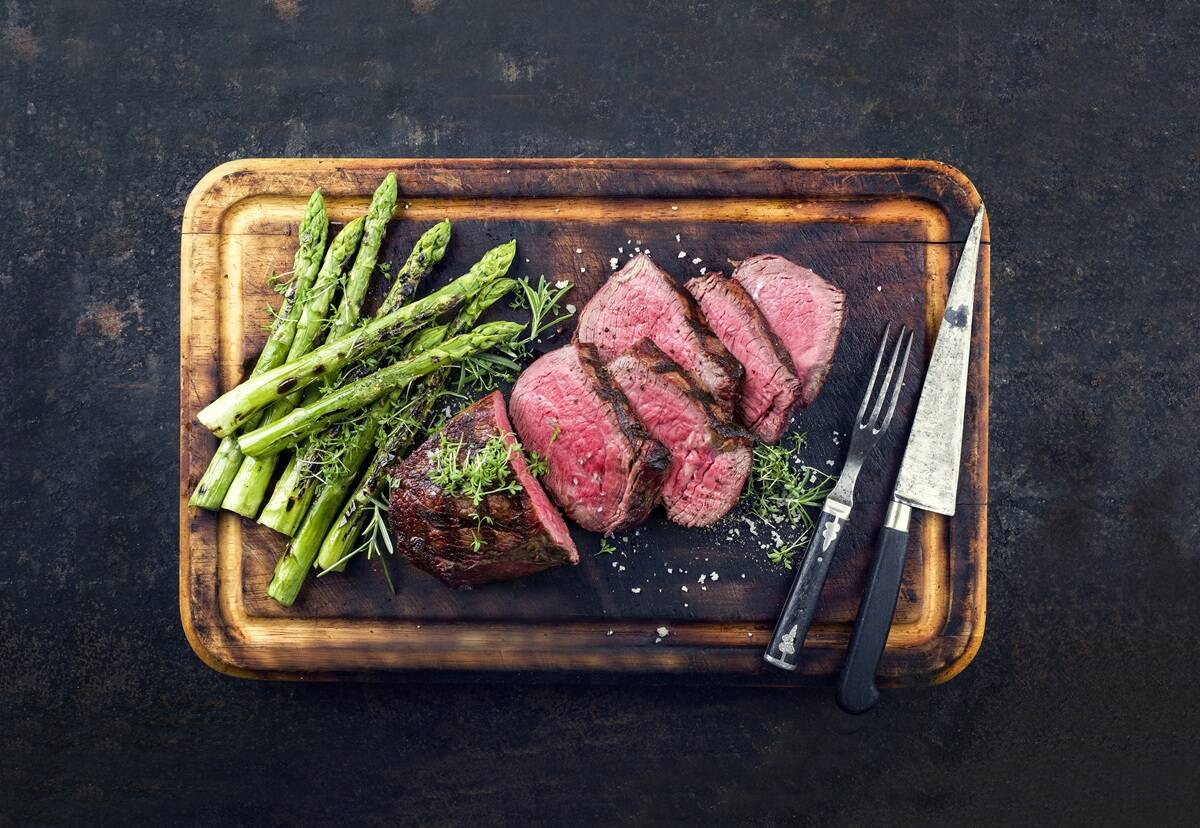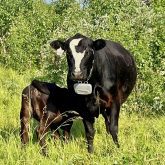Bob Weaber’s work on cattle genetics is for the producer, and so it’s for him, as well.
Growing up, his family raised mostly commercial cattle but also got involved in the Junior Hereford Association in the U.S., where he got interested in seedstock, which was further piqued when he went to university.
Now, Weaber operates a ranch at his home in the state of Kansas with his wife and their three children, where they raise cattle.
Read Also

Building demand together: The impact of Canada’s beef import levy
The beef import levy has become a central tool for ensuring balance in Canada’s beef industry
“I’ve been engaged in a lot of different breeds in different roles over time,” Weaber says. “One of the things that was easy to concede was the kids are going to show Hereford cattle.”
At his first job out of college, Weaber worked for the American Gelbvieh Association, where he got more and more into the genetic evaluation side of the business. When he went back to get his PhD, he got it in genetics.
Now, he’s a professor at Kansas State University, where he primarily focuses on beef cattle genetic improvement.
Genetics
Weaber came to Agribition to speak at the Canadian Beef Breeds Council’s annual general meeting, which they started hosting at Agribition in 2022. This year, they invited Weaber to speak about how genetics can play into sustainability for the beef industry.
“I don’t know who put the weather order in this time, they did a lot better than last time,” Weaber says during his presentation, chuckling about the contrast between his 2018 visit and 2023’s mild weather. “For Regina, I don’t expect it was abnormal, but for a guy from Kansas it was a little chilly.”
Weaber says beef producers know sustainability is important and the challenge is both incorporating that into their ranch and communicating it to the consumer.
He says when it comes to sustainability on one’s operation, producers must consider management production against societal and organizational goals.
“I think genetics is part of the things that we do have some control over in our beef production system,” Weaber says in an interview.
“Many of them have direct connection to the reproductive capacity of our cow herd and because of that then that sort of lends itself to this idea of how do we make improvement and how do we manage the cows in a way that’ll minimize environmental impact.”

Six pillars of sustainability
Weaber says there are six pillars that play into sustainability:
- Water resources
- Air and greenhouse gas emissions
- Animal health and wellbeing
- Land resources
- Efficiency and yield
- Employee safety and well-being
Weaber says seedstock producers touch on these things every day in their work. He says this provides them with both a challenge and an opportunity when it comes to each pillar.
“It’s (an) opportunity for us to think about: how do we make progress in our product?”
He also highlighted what he believes are core tenets of sustainability and genetics in the beef industry: biological efficiency, production efficiency and economic efficiency.
He says when looking at what affects sustainability, he also looks at how they affect efficiency, as well.
“There’s lots of things we can do from an application and production standpoint, to support sustainability,” Weaber says. “And I am, if you haven’t caught it already, a pretty firm believer in the idea that cattle are part of the solution and not the problem.”
Weaber says reproductive efficiency is important when it comes to genetics and sustainability.
“Thinking about, ‘How do I select and build replacement females that I know are going to last a long time and be productive?’ So components of that are genetic but there are also many managerial components that affect that.”
He says most of the traits used in genetic improvement are heritable anywhere from 10 to 50 per cent. That leaves at least 50 per cent that must be controlled by management.
“Sustainability is going to be the same,” Weaber says. “We are not going to solve all of the problems through genetics. The ones hopefully clear here is that if we don’t include genetics in the solution, we’ve missed a big chunk of the solution.”
He went on to say if sustainability had a phenotype, it would be a combination of genetics and environment. These are both things beef producers have control over on their operations.
“At the end of the day, it’s the combination of both of those things that get us where we need to go,” Weaber says.
“I just want us to be really cognizant of our individual and collective ability to manage and create change.”
The sustainable cow
While presenting at the AGM, Weaber pulled up a slide highlighting what the ideal cow looks like. He listed several different things, but a key one is a cow that is adapted to her production environment. He says this includes lactation, reproductive efficiency and maternal instincts.
“If we can get all the cows in Canada and the United States to fit that description, how far are we down the road of sustainability?” Weaber says. “It’s huge. We can see the roadside sign says 10 miles ahead. We’re almost there.”
Weaber says one thing that isn’t beneficial to genetics and sustainability is breeding larger cattle. He says there’s been selection pressure for growth which results in bigger cattle, but sometimes having larger cattle can take a toll in other areas as well.
A 2013 article by the Beef Cattle Research Council highlights this, too. At the time, the average weight of a cow went from 1,000 pounds to 1,400 pounds, the article states.
Weaber says having heavier cows means an increase in things such as management costs but can also decrease feed efficiency and reproductive efficiency.
“Seedstock producers can help educate their commercial customer about that topic,” Weaber says. “Commercial guys need to understand that relationship about what are the things that typify culled cows on my operation, and which are the cows that fall out.”
He recommends producers weigh and body condition score open cows because it will help fine-tune and point to where the problem is.
A big part of production when it comes to cattle is grazing and grass. Weaber says because cattle are directly on the land, unlike other livestock sectors, there’s more scrutiny on the beef sector.
Weaber says the industry has both the responsibility “as stewards of the resource,” as well as the ability to reap economic benefits from management changes. “Whereas if you go and look at say pork and poultry production, there’s obviously infrastructure ownership around those enterprises, but often it’s disconnected from the land resources that generate the feedstuffs that go into those and because of that it’s a different focus and a different set of controls.”
He says by leveraging ruminants and how they eat food humans aren’t capable of consuming, it can be used to the advantage of the beef industry by upcycling natural resources.
“So taking non-edible feed resources — grass, crop residue, stuff we can eat as humans or other monogastrics — and making a really high-quality, highly palatable, highly nutritious product.”
When it comes to ruminants in the food chain, their ability to consume grasses is integral to the food supply. Weaber says the global demand for grains for both livestock and humans is going to face pressure. The beef industry’s focus on “producing food from non-arable ground actually contributes very positively to our food supply and food security.”
Connecting with the public
Throughout his presentation, Weaber stresses the importance of connecting with the consumer and educating on the work that’s being done in the beef industry when it comes to sustainability.
He says letting people know producers have a vested interest in sustainability is important.
“The biggest thing is the consumer wants to know that we recognize that we have an obligation as members of society and businesses to produce product in a way that helps us domestically and internationally. And knowing that you care carries a lot of weight.”
He says consumers are watching closely for the industry’s response to societal calls to improve when it comes to sustainability, and it’s the producer’s job to convey the information on what they’re doing.
“Being able to not just say we did XYZ — to actually document our change both as an individual producer and as an industry — and that’s why I think producer engagement in organizations… helps us both individually identify opportunities for improvement in our own business, but also helps drive change that we can communicate collectively to our customers.”

















